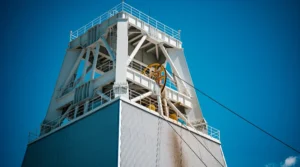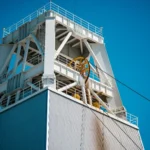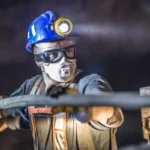PGNiG Upstream Norway of the Orlen Group has begun producing oil from the Tyrving field in the North Sea, whose reserves are estimated at around 25 million barrels. Their production will be carried out with exceptionally low CO2 emissions of 0.3 kg per barrel, the company said on Tuesday.
PGNiG Upstream Norway of the Orlen Group has begun oil production from the Tyrving field in the North Sea, Orlen announced in a Tuesday announcement. As it pointed out, the oil reserves there are estimated at about 25 million barrels, and their exploitation, it was assured, will be characterized by exceptionally low CO2 emissions of 0.3 kg per barrel.
The recoverable reserves of the new field will be sufficient for about 15 years of production, which at its peak will reach 20,000 barrels of oil equivalent per day, the release stressed.
At the same time, Orlen pointed out that thanks to very good cooperation with its concession partners Aker BP and Petoro, as well as with suppliers and subcontractors, the start of production from the Tyrving field came well in advance. Initially, the start of production there was planned only for 2025. As the company explained, the partners also managed to complete all work below the original budget.
Tyrving consists of three structures: Trell, Trine and Trell Nord, located about 2,200 meters below the bottom of the North Sea, the depth of which at this point is about 120 meters. PGNiG Upstream Norway holds an 11.9 percent stake in the field, while the rest is held by Aker BP, with 61.26 percent, the operator, and Petoro, with 26.84 percent.
Orlen said the field is being developed with three wells, which have been connected by an undersea pipeline to the floating production, storage and offloading unit FPSO Alvheim, anchored about 20 km west of the field. Other fields owned by PGNiG Upstream Norway, Skogul and Vilje, are already connected to the same unit.
– The development of Tyrving is in line with PGNiG Upstream Norway’s strategy of concentrating its operations within production hubs. This allows for more efficient use of the existing extraction infrastructure, which translates into reduced costs and accelerated development of deposits, the company stressed.
According to Orlen, an additional benefit is a reduction in the intensity of CO2 emissions associated with mining. “In the case of Tyrving, it amounts to only 0.3 kg of CO2 per barrel of oil, while the average intensity on the Norwegian Continental Shelf is about 8 kg of CO2 per barrel,” the information calculated.
Orlen Group is now a multienergy concern with refineries in Poland, the Czech Republic and Lithuania, as well as a network of service stations, including those in Germany, Slovakia, Hungary and Austria. It is also developing an oil and gas extraction segment, a petrochemical segment, and renewable energy sources. It also plans to develop nuclear power based on small SMR nuclear reactors. (PAP)
Polish Press Agency / Piotr Brzyski









